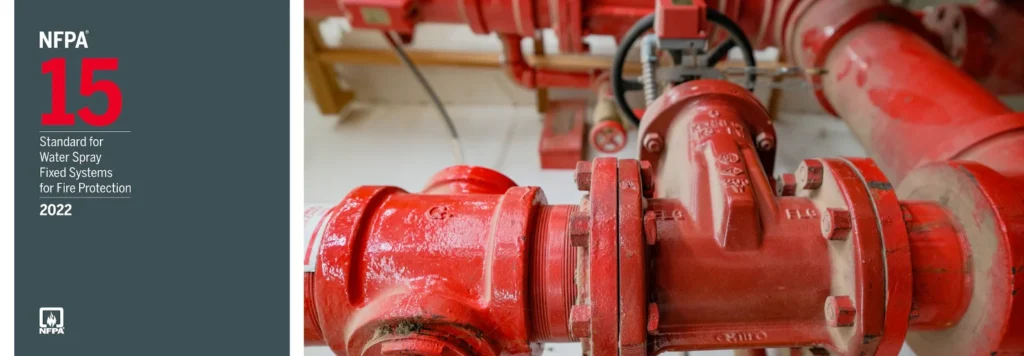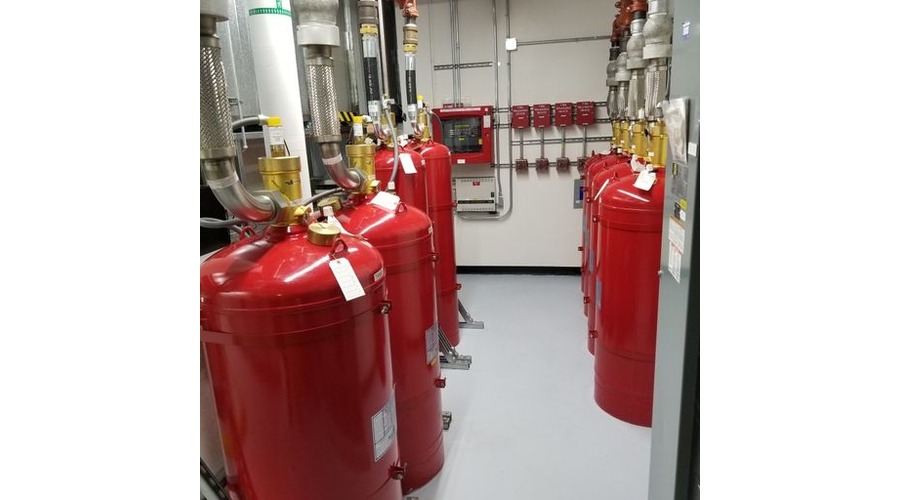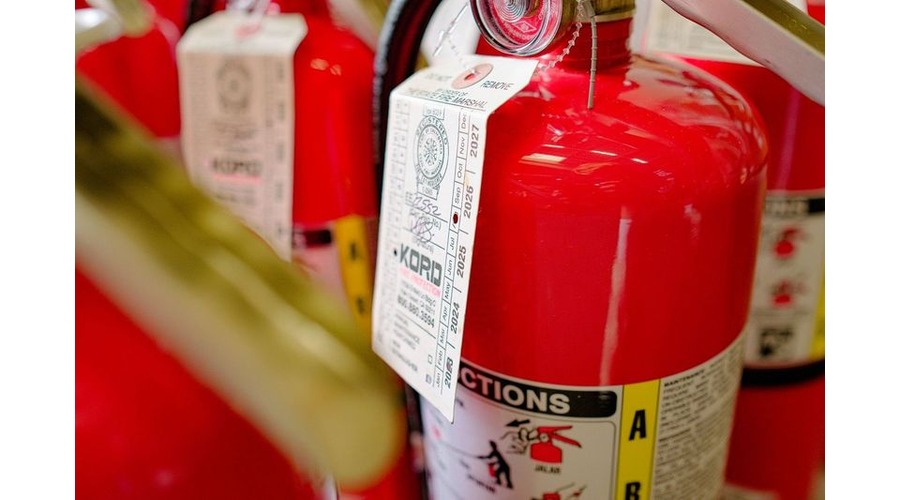

NFPA 15: Enhancing Fire Safety with Water Spray Fixed Systems
Introduction: Fire safety remains paramount in the design of any building to safeguard occupants and protect the property. Although fire safety equipment is a common feature in American buildings, it’s essential to acknowledge that fires can still occur unexpectedly. Being prepared for such contingencies is crucial, and this article explores the significance of properly installed and functional fire safety equipment, particularly Water Spray Fixed Systems.
Understanding the Water Spray System: A Water Spray System is a stationary pipeline system connected to a water source with spray nozzles. These systems are typically integrated with automatic fire detection systems or alarms to activate when a fire is detected. When triggered, they deliver high-pressure water to control and suppress the fire. Water Spray Systems are vital for safeguarding against fires fueled by flammable liquids, gases, oil switches, and electrical equipment like transformers.
NFPA 15: Your Guide to Fixed Water Spray Systems: All essential guidelines for Water Spray Systems are detailed in NFPA 15: Standard for Water Spray Fixed Systems for Fire Protection. NFPA 15 plays a pivotal role in controlling fires by offering recommendations on system layout, proper testing, and system maintenance.
Selecting the Right Nozzle: NFPA 15 is instrumental in selecting the correct spray nozzle to achieve the necessary coverage area and water density for effective fire suppression. The nozzle selection process considers factors such as system purpose, nozzle discharge characteristics, thermal draft conditions, equipment configuration, and atmospheric conditions. Velocity and water droplet size measurements are critical for determining water spray range, ensuring that nozzles comply with NFPA 15 standards.
Pipes and Hangers Selection: In addition to nozzles, NFPA 15 provides comprehensive guidance on selecting appropriate pipes, fittings, and hangers for Water Spray Systems. Pipe hangers and supports must be designed to withstand the maximum operating pressure. Pipes must endure at least 175 psig water pressure to prevent collapse during emergencies. Anti-corrosive materials and galvanization are necessary to ensure the longevity and effectiveness of pipes and fittings.
System Actuation Valves: Every Water Spray System, whether manual or automatic, must be equipped with system actuation valves for controlling water flow. In manual systems, these valves should be easily accessible and identifiable during emergencies. NFPA 15 outlines requirements for valve types and locations. Automatic systems require deluge valves, which must be hydraulically, electrically, or mechanically regulated to dispense water as needed.
Inspection and Maintenance: NFPA 15 emphasizes the importance of regular inspection and maintenance to mitigate fire risks. This includes ensuring an adequate water supply, conducting annual inspections and cleaning of nozzles and strainers, and properly maintaining valves and detectors.
Conclusion: Fixed water spray systems are indispensable for fire safety, but their effectiveness hinges on strict adherence to NFPA 15 standards. NFPA 15 provides a comprehensive framework for the design, installation, and maintenance of Water Spray Fixed Systems, ensuring that they are ready to respond effectively in the event of a fire.
Source:
NFPA 15 FAQS
Get Top-Rated Fire Safety Solutions!
Kord Fire Protection is your go-to when it comes to all things fire protection. For over 20 years, we’ve been serving Southern California with the quality service and equipment to keep your home or business safe at all times. Our competitive prices reflect our unwavering commitment to protecting what matters most in the event of a fire emergency. Give us a call, send an email, or use that form!


Protect Your Property
Get the latest fire safety tips delivered straight to your inbox.




